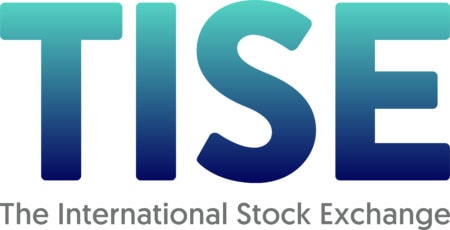In this feature article, Mark Oliphant of The International Stock Exchange Group goes from Brexit and through COVID-19 to explore the impact so far on, and the prospects for the future of, green finance and the wider sustainable investing market.
What do green finance and Brexit have in common? There might be quite a few things which spring to mind but to me it is the fact that these items were sat atop the news agenda prior to the spread of the coronavirus (COVID-19) towards the end of the first quarter of the year. Now, like actors in the West End or Broadway, they are in the wings awaiting the end of the current act before being able to reclaim their place centre stage.
Of course, it’s not that cut and dried but you get my point. Only at the beginning of March, my colleague Fiona Le Poidevin, CEO of The International Stock Exchange Group (TISEG), wrote an article ‘Green is good’ which commented upon the remarkable focus on green finance during January’s World Economic Forum in Davos. The broader point – of the Forum and as such, her article – was that there is an increasing body of opinion which now views there to be an alignment between tackling climate change and economic interests; what might be deemed purposeful profits.
And then there was COVID-19.
So, what has changed, if anything?
Green finance in a COVID world
Well, on the one hand, one impact of COVID-19 has been the much talked about benefit to the environment, both in the short term and with the potential for this to be longer lasting. For example, take the words of Vogue China editor, Angelica Cheung, speaking to The Times magazine:
“… this unfortunate experience [COVID-19] has made me think about what’s important… all this has made me realise we do not need to travel as much as we used to… Now they’ve shown the air quality in China is better because no one is flying. So maybe we adjust our lifestyles and the way we do business.”
If this is from a bastion of consumerism that is Vogue then perhaps there really is hope that COVID-19 will be a turning point in the fight against climate change. Indeed, there is an argument to suggest that the restrictions imposed by governments and their subsequent funding initiatives to help society meet the financial challenges posed by COVID-19 have been not only social but also, by proxy, green finance initiatives.
“…in the battle to attract capital from investors then green finance could be on the back foot now in comparison with social initiatives.”
There is though sentiment emerging that in the battle to attract capital from investors then green finance could be on the back foot now in comparison with social initiatives. In April, the asset manager Amundi and World Bank Group member the International Financial Corporation published a report which showed that the green bond market globally saw record issuance of $240 billion in 2019 (3% of total global bonds issued last year). Yet, Sustainalytics has reported that green bonds have stalled amid COVID-19, with issuances in March 2020 only a third in value of the year prior and similarly, data from the Climate Bonds Initiative (CBI) suggests that monthly issuance of green bonds has declined by approximately 90% between February and March this year.
The Social/COVID phenomenon
This is just a snapshot and there is no doubt that green bonds, along with sustainability bonds and social bonds, have been on an upward trajectory in recent years. However, while green bond issuance has waned since the onset of COVID-19, conversely it has accelerated issuances of sustainability and social bonds as the private markets are tapped to help with the response and recovery. For example, the Institute of International Finance has reported recent monthly volumes of more than $7 billion in social bond issuances, compared to a monthly average of $1.2 billion in 2018/19, and with the prospect of a further surge.
Philips and Pfizer are among the corporate giants that have issued sustainability bonds greater than $1 billion that will target at least some of the proceeds to COVID responses, while governments and development banks from around the world have been issuing – and in some cases, listing – specific COVID bonds to raise funds from backers, such as Goldman Sachs, to help meet the challenges posed to society by the pandemic.
“…it [COVID-19] has accelerated issuances of sustainability and social bonds as the private markets are tapped to help with the response and recovery.”
It is noteworthy that some of the market commentary at least has also focused on the standards by which these bonds are assessed as meeting sustainability, social or COVID specific criteria. Many social bonds have been established with strategies linked to the UN Sustainable Development Goals, and the International Capital Markets Association (ICMA) has both Green Bond Principles and Social Bond Principles. ICMA, along with ratings agencies and other sector specialists, have adopted updated social/COVID bond guidelines to take into account the specific healthcare and socio-economic measures being taken in respect of the pandemic.
In our experience to date, these standards have been less defined and less universal than those which have been established in the more developed green space, where examples include the CBI certification and of course, the EU has published its sustainable finance taxonomy for climate change mitigation or adaptation, along with an EU green bond standard.
At The International Stock Exchange (TISE) we have developed a green market segment, TISE GREEN, with debt or equity issuers required to provide third party verification against such a recognised standard.
In addition, we have existing issuers, such as social housing investment vehicles, on the market who would likely qualify for a specific social segment and this is an area we are monitoring closely, not least as a result of COVID-19 and the impact that this is having on socially responsible investing and the accompanying assessment measures.
The prevalence of ESG
Taking a step back, what I have observed in recent months, alongside this polar approach of green juxtaposed to social/COVID, has been a gravitation towards a more blended sustainable approach and with considerations of Environmental, Social and Governance (ESG) factors. Simply at an anecdotal level, I was struck by how one day in April each of the stories on a daily newswire, which is financial services orientated but does not a green/sustainable bias, related to ESG (predominantly) or “socially responsible” investing.
This would suggest that ESG is very much on the agenda and this is backed up by the fact that Morningstar has recently increased its stake in, and to take sole ownership of, Dutch ESG analysis firm, Sustainalytics.
Announcing the deal, Kunal Kapoor, CEO of Morningstar, said:
“Modern investors in public and private markets are demanding ESG data, research, ratings, and solutions in order to make informed, meaningful investing decisions. From climate change to supply-chain practices, the nature of the investment process is evolving and shining a spotlight on demand for stakeholder capitalism. Whether assessing the durability of a company’s economic moat or the stability of its credit rating, this is the future of long-term investing.”
Kapoor and Morningstar are not holding back, in several senses, as to how they see the future. What is more, there also appears to be a wide body of early evidence to suggest that an ESG focus (by both companies and their investors) has also been vindicated by the pandemic.
Bloomberg, MSCI, Morningstar, HSBC, and Bank of America have all reported that over recent months ESG leaders have outperformed major benchmarks and/or those companies with worse ESG profiles, while those with the better ESG ratings were also less volatile, thus being seen to represent less risk. This is early data, and the level of out performance is variable and not always universal, not least in the environmental space, where HSBC has found that ‘climate-focused’ stocks have outperformed yet other reports show that the Wilder-Hill Clean Energy Index has underperformed the S&P 500.
Green finance – what next?
What all of this evidence seems to suggest is that COVID-19 has in some ways led to a rebalancing of focus away from such a singular focus on green finance per se and to a more blended ESG approach where the ‘E’ is no longer perhaps so dominant but is now accompanied by a stronger accent on the ‘S’.
The UN Environmental Programme report ‘Implications of the COVID-19 Pandemic for Global Sustainable Finance: An Initial Framework for Response Strategies’ talks about the “drive for ESG alpha” given the “surge of focus on social issues”. It notes that “while it is too early to tell what the long-term impacts of this increased focus maybe, there is potential for a major ‘repricing’ of social issues in ESG ratings.” Indeed, this speaks to the current problem in ESG ratings where there is a lack of standardisation in measurements and evaluation and the report adds that “going forward, this may motivate efforts to strengthen the coherence of ESG ratings information.”
“…the ‘E’ is no longer perhaps so dominant but is now accompanied by a stronger accent on the ‘S’.”
At the same time, we have seen the Global Impact Investing Network (GIIN) form the Response, Recovery and Resilience Investment Coalition, R3, to increase the scale and effectiveness of impact investing in tackling COVID-19 and its effects. Similarly, the UN report referenced earlier, and written for the Financial Centres for Sustainability, also sees the future being a focus of linking economic, social and environmental health considerations together, not just for the immediate response and the recovery but to strengthen resilience. It says, “we now need to think of what type of interventions will be needed in the wake of the pandemic to strengthen resilience not only of the financial system, but of the economy, society, and environment.”
It is interesting that this UN report specifically refers to the economy because there has been a growing share of voice advocating a move away from focussing on economic indicators and instead to using other measures, such as environmental and social factors. Yet, on the other hand, there are also fears that COVID-19 will, like with the global financial crisis of 2008, turn attention and focus away from sustainable investing of any hue.
However, the early signs are that this will not be the case and that it is here to stay as a growing and increasingly mainstream market. Neither does it appear that the pandemic will completely shift allocations from green finance into social initiatives but rather, there will be a rebalancing between various considerations of responsible investing and a greater appreciation of the interplay between these factors in ultimately delivering a happier and healthier planet for the future.
A version of this article was published on ethicalcorp.com. To view the pdf version click here.


